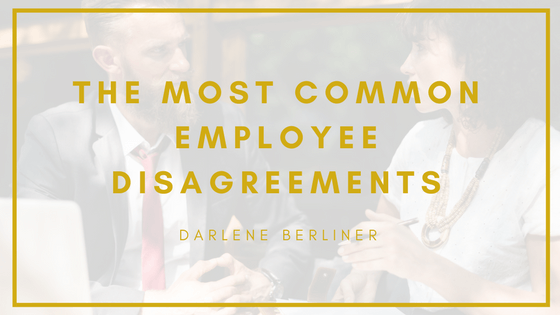Conflict is most often defined as a disagreement or opposition regarding other’s interests or ideas. Whenever people work together, no matter the setting, conflict of some sort is likely to occur. Conflict is a very natural and normal part of the workplace. However, conflict is not always a negative occurrence. When handled properly, conflict within an organization encourages growth, bonding, and results in a more positive environment for all. Moreover, while avoiding conflict is often perceived as the easiest way to alleviate these tensions, avoidance does not chase conflict from the workplace. Instead, all conflicts must be addressed effectively and timely, otherwise an organization likely will find the very same tensions manifest themselves and re-emerge later, often as stronger and more complicated areas of opposition.
By being aware of the most common types of employee conflict, and actively working to resolve these forms of resistance, employers are able to maintain a supportive and inclusive work environment for all.
Work Style Differences
Just as each employee has a unique personality, they also possess a distinct and preferred work style. While some associates enjoy working through one task at a time for consistency, other associates prefer to put their head down, and dig in until multiple assignments are finished simultaneously. Some workers perform better in an independent environment, while others enjoy team-oriented approaches. And although it may seem appealing to have a team with the same work styles, it is far from realistic. Instead, employers must work to understand each team member’s work style in order to provide appropriate training and workload assignments.
Leadership Conflict
Leadership conflict can be found in any size business. However, it becomes far more pronounced in organizations with multiple founders, executives or stakeholders. Some leaders may be very hands-on, specific, and direct regarding their expectations, and yet others employ a “sink or swim” management philosophy. While the leaders themselves take no issue with their differing work styles, employees may feel unfairly disadvantaged as they must learn the management style of each leader, often at multiple levels, in efforts to avoid conflict. This can begin to take a toll on employees, especially when there are frequent changes within the leadership hierarchy.
To combat potential dissension within employees, companies must focus on creating core values and a corporate culture that encourages openness, inclusion, and harmony. If handled correctly, the culture and values of a corporation will assist workers in decision making, and facilitate overall involvement within the organization.
Interdependence Conflict
In almost all work environments, there comes a time when employees must work together on projects. When the implementation and completion of a task requires cooperation, employees can find themselves locked in an interdependence conflict. Fortunately, this conflict is the easiest to avoid and solve. To diffuse tensions, the team leader must clarify and explain each individual’s role, and associated responsibilities, such that workers understand their personal contributions, other team member contributions, and the mission of the team as a whole.

